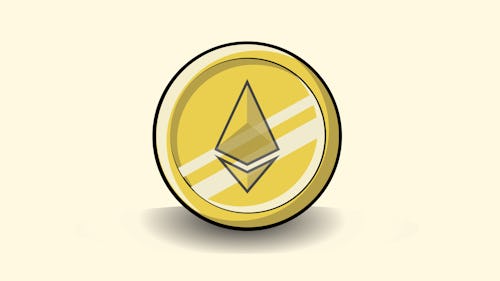
The long-awaited Ethereum “Merge” is finally complete, and it brings with it significant innovation for the world’s second-largest blockchain. Most notably, the Merge moves Ethereum away from the proof-of-work system it’s used since its inception; instead, the Ethereum blockchain will now use a proof-of-stake system for the creation of new cryptocurrency.
The process of switching Ethereum to a proof-of-stake system is a technically complex one — hence the very long wait for its completion. Those complexities open up a world of new possibilities for the Ethereum blockchain, most notably in that the new system uses much less power to create new Ethereum.
The outsized environmental impact of cryptocurrency mining is one of the biggest hurdles to mass adoption. The new Ethereum needs somewhere around 99.95 percent less energy to function, a figure that will make it significantly less unattractive in general. That gives Ethereum a mighty leg up over Bitcoin, which still uses a proof-of-work system for its mining processes.
Proof of what now? —
The Merge, which was completed in the very early hours of September 15, successfully transitioned the Ethereum blockchain from its long-standing proof-of-work system to a proof-of-stake system. (The capital-M “Merge” refers to the merging of the original Ethereum chain (the Mainnet) with a separate proof-of-stake chain (the Beacon Chain); this methodology allowed the Mainnet to continue functioning as normal while the Beacon Chain was developed.)
Here’s all you really need to know about those chains:
- A proof-of-work system involves solving math problems so complex that heavy computational power is needed to complete them; the reward for solving those problems is new Bitcoin. This is known as “mining.”
- A proof-of-stake system allows anyone to “stake” crypto (at least 32 ETH) into a secure pool; the more a validator stakes, the more likely it is they’ll be rewarded with a new block for the Ethereum blockchain (thereby creating more currency).
About those gas fees...
Proof-of-stake completely rids Ethereum of the need for heavy machinery — thereby eliminating nearly its entire environmental impact. Losing the computers means it’s now much easier for anyone to get involved with Ethereum. All you need to make more ETH is an existing wallet full of ETH. Granted, that 32 ETH minimum currently translates to about $47,600, so validators do really need to be invested in the system to create more ETH.
One big thing that’s not changing yet: high transaction fees. These fees, known as “gas,” are required to complete any transaction on the Ethereum blockchain, can make tasks like buying and selling NFTs much more expensive than newcomers might expect.
The good news is that the Merge opens up room for additional infrastructure changes that could eventually make gas much less expensive. For now, though, even the new Ethereum blockchain is expensive to use. Buyers can, at the very least, rest easier knowing their transactions aren’t killing the planet quite so quickly anymore.







